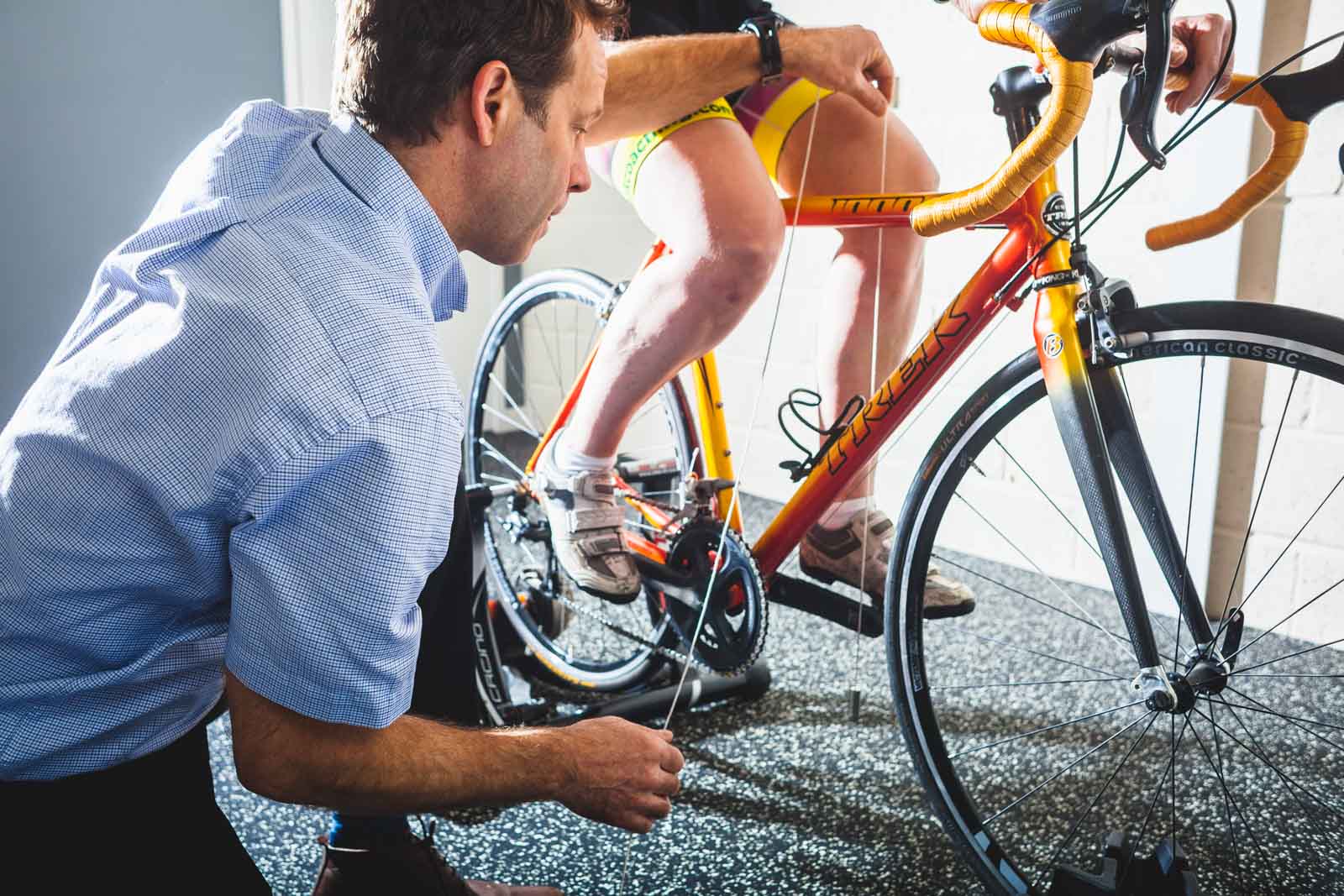Sheffield has a large cycling population partly due to the close proximity of the Peak District National Park with its abundance of winding country lanes and trails. This beautiful area attracts all types of cyclists consisting of leisure/touring, mountain biking, road cyclocross and triathlon.
The repetitive nature of cycling has the potential to cause problems. When observing the statistics, competitive cyclists average up to 5,000 pedalling revolutions an hour, between 10-150 miles each session and up to 20,000 miles a year. It is therefore easy to understand that even very subtle irregularities with the bike or cyclist can manifest in to discomfort and pain and possibly time off the bike.
At Bikefly we come into regular contact with cyclists presenting with bike related and unrelated injuries or problems. The commonest injury prone areas we observe in cyclists are the neck, back and knees.
A cyclists͛ flexibility and joint/muscle movement is fundamental to gaining particular positions when riding a bike.

This is relevant if you are competing in a time trial where an aerodynamic forward position is required as opposed to a touring cyclist whom will require a more comfortable position for longer periods in the saddle. A series of physical tests combined with a musculoskeletal assessment is paramount in identifying irregularities and/or asymmetries that may be part or the main problem for discomfort, pain and time off the bike.
There can be many reasons for the onset of pain in cyclists. Commonly we observe that the bike set up or bike fit is incorrect.

For instance if the bike is too big then this can result in overreaching and potentially cause irritations of both the neck and lower back. If the saddle is too high then a rider will tend to over extend the knee when the pedal is furthest away from them causing excessive pelvis movement from side to side. This may cause lower back pain as well as pain behind the
knee. The list goes on from fitting cleats incorrectly in relation to the pedal spindle, as well asymmetries in hip, knee and foot alignments. Ultimately the bike should fit the rider and not vice versa. A bike fit is a dynamic process that will change over time depending on the amount of cycling you do and how the body reacts to training. Start your Autumn training with a correct bike fit and physical assessment at Bikefly and optimise your position and comfort.

